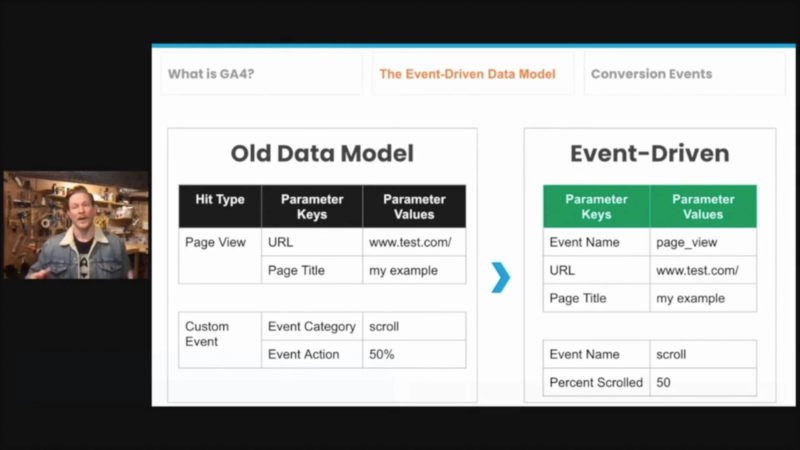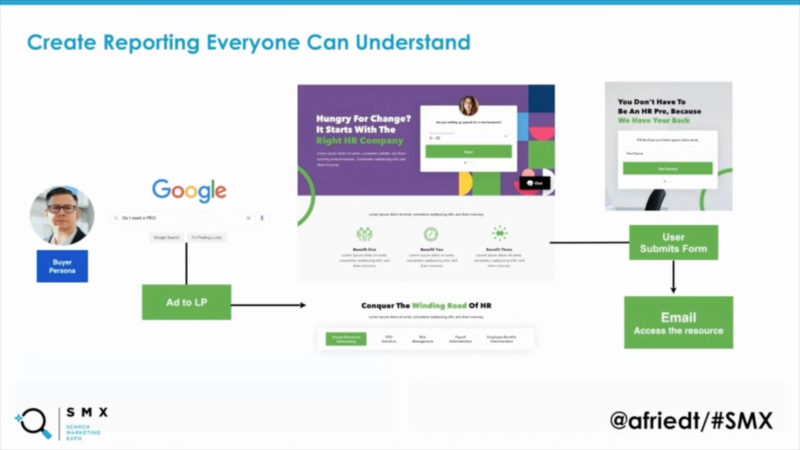Key trends in PPC, reporting and analytics in 2021 and beyond
With COVID shifting consumer behavior in 2020, use these trends from speakers at SMX Report to find equilibrium in 2021.
With Microsoft Advertising revenues exceeding $7 billion last year and Google’s ad revenues around $39 billion in just Q4 of 2020, there’s no question that companies across the globe rely on digital advertising to help keep their businesses afloat. This is even more true in the wake of the COVID-19 pandemic as consumers are more online than ever before. As a result, e-commerce sales jumped $174.87 billion from 2019 to 2020.
As we venture toward a vaccine, there’s still an indication that trends begat by COVID won’t go away anytime soon and may even become our “new normal.” For PPC marketers, that means a focus on the following five trends.
Proactive over reactive analysis
Because the COVID-19 situation escalated very quickly and the behaviors of consumers continued to evolve last year, the way marketers adjusted often felt very reactive. Many brands initially pulled back on spend and then later realized the dramatic move toward digital, which resulted in a quick investment back into SEO and PPC. Local businesses were unsure of regulations and next steps and then quickly moved to online ordering and delivery options. Many small businesses had to transition to e-commerce just to stay alive.
Now that we’re more than a year into pandemic life, 2021 presents the opportunity to be even more proactive about search marketing strategies. We’re in the flow of the new normal which means there’s room now for testing, CRO, experiments, and strategizing.
Proactive competitive analysis. One key element of proactive analysis and strategy is performing competitive analysis in advance. In their session at SMX Report, Tamara Westman and Steve Hammer dove into the tactics behind a proactive competitive analysis. “Ninety percent of people do [competitive analysis] in crisis mode,” said Hammer, “But there’s a real opportunity for those of us who can look at this proactively and in advance.”
Westman recommends always having key metrics top of mind as clients and stakeholders want to know how they’re stacking up, but also because it should be the lens through which you view a lot of your daily PPC tasks.

“Use the ad preview tool. Check in on your auction insights in Google or your competition reports in Bing. And take it a step further by looking into seasonality trends,” recommends Westman. Hammer adds that a truly proactive competitive analysis means you can base your strategy on what’s actually profitable to your business or your clients’ business.

Hammer explains his competitive analysis strategy: “If we’re highly profitable, we should fight. Raise our bids. If we’re in the marginal profit, we may… let them have their top position and maybe we work on ad testing instead of raising our bids. If we’re weak to zero profit, run away. There’s no sense in being in there. And if you’re unprofitable, laugh. You can save effort, pause the campaign, and your competitor is going to waste money.”
This year is the year to get proactive on your ads strategy, keyword research, market research, competitive analysis, and PPC tactics to get ahead of the new normal we’re facing.
Privacy and attribution
With Google’s FLoC and Apple’s IDFA changes, privacy is becoming a norm in 2021 instead of just a nice to have. FLoC comes with the deprecation of third-party cookies and puts users into cohorts with similar interests instead of tracking people on the individual level online. This means that ads will be targeted at audiences with similar interests (as determined by Google) instead of individual targeting. FLoC is open to advertiser testing in Q2 of 2021, but Google says their testing indicates FLoC is 95% as accurate as cookies. Plus, Apple’s iOS14 update gives users the option to decline in-app tracking with a prompt (which tech like Facebook says will dramatically affect ad targeting).
What does that mean for attribution and tracking your multi-channel touchpoints? Well, for most marketers they’re hoping Google’s 95% prediction holds true and on iPhones, it means we have two short lines to express to users why and how we use their data. However, it’s interesting that these developments have come along right as Google launched Google Analytics 4.
Google Analytics 4 and attribution. GA4 combines both app and website data to help provide a more comprehensive look at our property data, and it can help move us toward a better idea of how people get to our online properties and what they do when they’re there. “Google Analytics 4 is based on an event-driven data model which eliminates the concept of a hit type,” says Ken Williams in his GA4 session at SMX Report. There are no more goals in the new version of Google Analytics. Instead, marketers will be looking at conversion events and metrics around engagement time. These new KPIs bound in conversion modeling can help us understand more about how micro-conversions on our own sites contribute to the final purchase.

Williams recommends search marketers and analysts “fully embrace user privacy where possible. Request permission, collect the minimum amount of data necessary, purge it when you’re done, and clearly communicate what you’re doing with it.”
With cookies on their way out and Apple requiring explicit permission for data tracking within apps, it’s more critical than ever that marketers make the case for requesting user data, begin the collection of first-party data, and ensure that we’re transparent about how we use it.
Stakeholder communication
With all the changes in search marketing, it’s critical that we ensure our clients and/or stakeholders understand how the landscape is evolving (or not!), what’s coming down the road, how we’re adjusting, and what it means for them. There’s nothing worse than having a client or your boss come to you worried about news they’ve heard from somewhere else. Proactive communication and reporting is a key strategy in not only keeping your stakeholders informed but assuaging their worries as the search marketing landscape adjusts.
Setting a communication schedule. In their joint session at SMX report, Amanda Farley and Maria Corcoran spoke about reporting needs across the organization from two different perspectives. Farley is a partner at SSDM, a digital marketing agency, while Corcoran is the senior global performance marketing platform manager at Adobe Systems.
One key way to stay proactive about what’s going on in paid search is to have a set reporting and communication scheduling so your key stakeholders know when they can expect updates, news, and KPIs. Corcoran shared her team’s reporting and review timeline as an example. Along with regular reporting, she ensures that each reporting audience has the kind of dashboard that correlated to the key metrics that matter to them. What matters to the C-level stakeholders is different than what matters to the tech team who are in the platforms and tools every day.

Along with those KPIs, it’s critical that you’re conveying news and updates to your clients and/or boss in a way that makes sense to them. It’s easy to get caught up in jargon and acronyms, but what matters to your audience is what these numbers and potential changes mean for them, their business, and their numbers.
Attach your reporting to the user journey. Farley included an example of reporting that is accessible to everyone, and the key is attaching the data and information to the user journey. Below we can see that she’s telling her clients a story about a certain persona.

That person goes to Google and searches, “Do I need a PEO.” From there, that person clicks her client’s ad and ends up on their HR company landing page. The buyer signs up for a free email resource which is sent to their inbox, and now Farley’s client has the buyer’s email address to begin the nurture process. Explaining how it works, what goes into it, what changes affect potential fluctuations, and more are all part of that reporting process. It ensures stakeholder communication is proactive and tailored to that client.
By tying the communication strategy to the user journey and to the important KPIs and metrics for each audience, you’re ensuring that they stay informed both on their individual PPC campaign and account performance, but also about the latest PPC news and ad platform updates that could affect their strategies. And the important element is that you are the source of that information for them.
Automation
In search marketing as a whole, automation has been on the rise for quite some time. With Google Ads phasing out Broad Match Modifier, GPT-3 gaining steam, and the increase in machine learning testing tools, digital advertising is moving more toward AI and automation every day. We’ve got chatbots and marketing automation moving customers along in their marketing journey. There are even automated tools where you can create images just from text.
In the past, marketers might have been more hesitant to embrace automation, and it makes sense. We’ve been burned previously by automated tools or processes that have gone too far or wasted time, or worse, money. However, with ad tools evolving toward machine learning and automation, it’s critical that we catch on, catch up, and take advantage of how we can use it in our processes.
Automation in Google Ads can mean a more consolidated account structure when we’re not segmenting every device or audience out. It can mean machine learning in smaller accounts that may not have as much initial data. And it can mean more conversion or better CPAs. The key to automation in PPC is testing. If it isn’t working for your campaigns or accounts, then iterating and finding a better solution where you can is key.
Automating your PPC reporting can also help you save time and ensure that the stakeholder communication mentioned above fresh and timely.
Digital commerce flywheel
This trend has been on the books every year for a while, but the key this year is the digital marketing flywheel is taking effect with the other key trends influencing it. As we’re coming to our pandemic equilibrium in digital behaviors, consumers say they’re going to continue their online habits even after the vaccine is in effect. As such, the customer journey to purchase will be even more varied and potentially less predictable.
This slide from Amanda Farley’s SMX Report presentation illustrates how the consumer doesn’t just smoothly go from top-of-funnel to bottom-of-funnel, but moves in and out of each phase as they collect data, make touchpoints, engage with content and channels, and finally make a purchase.

This means reporting on this flywheel can be even more nuanced and the communication in those stakeholder and client meetings is critical to give clients a better understanding of how to serve their customers online as you cater to each persona’s journey.
If you want to stay up to date on these trends, see the full sessions, and learn more about the latest in reporting and analytics in search marketing, check out the on-demand sessions from SMX Report. The agenda on the PPC side covers reporting across the organization, a look into Google Analytics 4, a deep-dive into the Microsoft Advertising and Google Ads platforms, and a how-to session on competitive analysis.
Contributing authors are invited to create content for Search Engine Land and are chosen for their expertise and contribution to the search community. Our contributors work under the oversight of the editorial staff and contributions are checked for quality and relevance to our readers. The opinions they express are their own.
Related stories
New on Search Engine Land